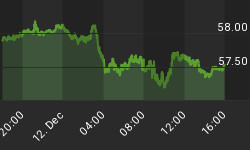While many market observers are waiting for a correction, gold is pushing relentlessly higher. After it powered through $700/oz, pullbacks on gold became short and shallow. A correction in gold will no doubt come, but we are not willing to bet money on how soon it will occur and how serious it will be.
The weekly chart of gold below shows an overbought condition but a year and a half ago gold was far more overbought time-wise and price-wise. By following the 2003 and 2005 gold rally patterns we can expect a few more months of handsome gains before this rally in the secular gold bull market is over. Any correction at this point would be a healthy sign.

What if, however, we are wrong and gold is now, in fact, making a final spike to its all time high of $850 or higher. The aftermath, as after the top in 1980, could be severe and it would be time to sell? Is this a real possibility?
No, the situation today is completely different:
- In August 1979, Paul Volcker became the chair of the Federal Reserve and start to fight inflation by radically raising interest rates. Today, Chairman B. Bernanke, in an effort alleviate the pain in the ailing banking system, is aggressively lowering interest rates.
- 28 years ago, the United States was the biggest creditor nation in the world. Now, the opposite is the case - US is the largest debtor. This, along with the Fed policy is causing the dollar to fall to historic lows.
- Gold may appear to be overextended but this is not the case in real terms. In fact, gold should be around $3,000/oz in order to reach its inflation adjusted highs. Only then will there be a real reason to worry about a possible end of the gold bull market.
We reiterate that the gold bull market has a long way to go. Don't be afraid to miss the boat - there are many opportunities ahead. Hold your positions and buy the dips.
















